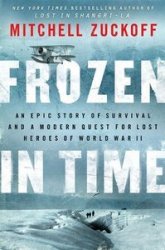There were plenty of German soldiers who had no great desire to return to civilian life, especially to the unemployment, hunger, and hardship they saw everywhere. As the war ended, a Major Kurt von Schleicher, later to become Defense Minister and Chancellor, proposed the formation of a new volunteer force to consist only of chosen veteran soldiers. They would be equipped with motor transport and organized into mobile “storm battalions.” The plan was approved. The men were recruited secretly and signed short-term contracts, renewable every month. Influenced by the soldiers’ councils that the rebellious soldiers had created, the Freikorps would allow its soldiers to vote for representatives, who would voice complaints about pay, leave, and even complaints about the officers.
It was 4,000 such well-disciplined soldiers that Ebert was taken to see on 4 January 1919. He was told that this Freikorps was at his disposal as a peace-keeping force. By 9 January, the Freikorps was fighting against the Spartacists in the streets of Berlin. The forces of the Left were defeated, and when the elections were held on 19 January, Ebert’s Social Democrats won a large plurality—38 per cent of the total vote. In the first days of March, the Communists again tried to seize power. Sailors besieged police headquarters, and workers attacked police stations. The Ebert government declared martial law, and Freikorps units were sent into action. The uprising was put down in a series of bloody clashes.
The first Freikorps unit had been financed by special funds available to the German General Staff, but now the Ebert government financed them and recruiting posters appeared everywhere. The theme of the recruitment message—“Don’t let Germany become a laughingstock”—provides a revealing insight into what most troubled the German public at this time.
Schleicher’s ideas about the Freikorps came at about the same time that Germany’s eastern armies were asking for permission to recruit more men. A full-scale war continued along these eastern frontiers as Germany’s neighbors tried to occupy more territory. The Germans fought back with the full approval of the Allies, who had ordered that the German armies in the Ukraine and Poland and the Eighth Army in the Baltic must remain in place as a barrier against the expansion of Russia’s new army. But as news of the Armistice came, these German troops also wanted to go home and German resistance weakened.
The Freikorps, on the other hand, was to be a well-paid force dedicated to the defense of the homeland and unsympathetic to Communist ideas. Ebert’s acceptance of this force produced another wave of bitter criticism from his left-wing allies, some of whom wanted nothing to do with the Freikorps even if the Republic perished as a result. But Ebert remained the pragmatist. He resisted cries for the suppression of the Freikorps just as earlier he had resisted a series of measures that would have changed the army beyond recognition.*
Vociferous objections to the Freikorps meant that the German Army’s High Command had to be discreet in the administration and control of these dispersed units. To a large extent the Freikorps came under the individual control of each unit commander. Usually the commander was a tough, idiosyncratic war hero who controlled his men by strength of personality. Such men often gave their name to formations—and units were as varied as their leaders. There were well over a hundred Freikorps units, in all about a quarter of a million volunteers of a largely middle-class bias. At least one company was composed entirely of ex-officers, and in others there were many students. Not everyone was a volunteer. To boost initial recruitment, the final call-up of conscripts was assigned to the Freikorps.
The self-sufficiency of Freikorps units gave them the sort of independence and adaptability that was to become a characteristic of Hitler’s army. They had inherited the ideas of the Stosstrupp (shock troop) formations which Germany had developed in the final months of the war. Those shock, or storm, troops had been mixed units of infantry and engineers using light machine guns, flamethrowers, light mortars, and also small artillery pieces that infantrymen could manhandle into position for use at close quarters.
Now the Freikorps modified the techniques of 1918. Called upon to fight guerrillas in open country, they used cavalry and armored cars. To dispose of the revolutionaries they quickly learned the business of street fighting. It was this fighting by the Freikorps that marked the change from the old style of trench warfare to the fluid breakthrough tactics of what came to be called Blitzkrieg (lightning war). So it was not surprising to find here, on Germany’s eastern frontier, two men who were to fashion the new German Army. The Chief of Staff of Frontier Protection Service, North, where the most bitter ¦ The Supreme Command was to come under the authority of the soldiers’ councils, all insignia of rank were to be abolished, troops were to elect their officers and demote them by vote. All these ideas, and many more, were adopted by a large majority at the 6 December 1918 congress of associated political parties. Ebert ignored these specific directives because he believed that such changes would make the army ineffective and mean the death of the Republic.
Fighting took place, was Generalmajor Hans von Seeckt. The lA, the first staff officer, of the Freikorps’s ruthless and formidable “Iron Division” was a young captain named Heinz Guderian.




 World History
World History









